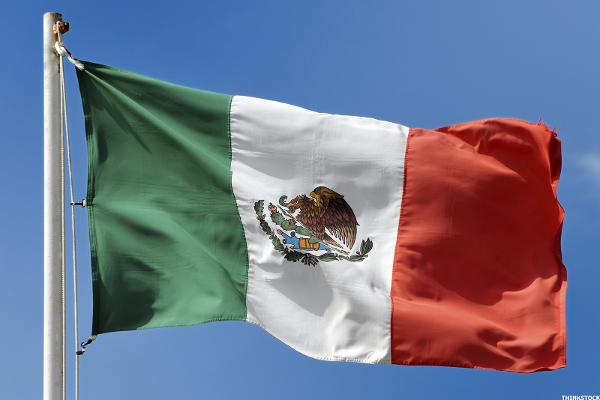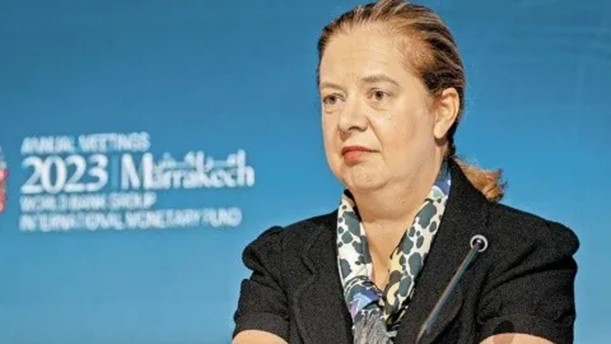The International Monetary Fund (IMF) raised its growth forecast for the Mexican economy to 3.2% from 2.6% predicted by them in July.
The resilience of the domestic market, underpinned by remittances, slowing inflation and the effect of greater public and private investment are the factors behind this improved outlook for Mexico, explained the IMF’s deputy director of economic research, Petya Koeva.
Interviewed by El Economista from Marrakech, where the fall meetings of the IMF and the World Bank are being held, she notes that Mexico is one of the spotlights in the world economic divergence panorama. It is undoubtedly one of the countries that will benefit from nearshoring, a phenomenon resulting from geo-economic fragmentation.
The glow of the Mexican economy will also extend into next year. IMF experts anticipate that the economy will achieve 2.1% growth which, although it shows a deceleration, which could reflect the impact of more moderate activity in the United States, incorporates a correction of six tenths of a point with respect to the July forecast.
Undoubtedly, the boost the country plans to give to growth with the expansionary fiscal policy planned by the authorities for 2024 will be decisive for growth, he pointed out.
Attractive Mexico
He considered that it is still too early to identify whether the flow of productive investments, which has been observed, is the result of the relocation of companies seeking to get closer to the final market, the so-called nearshoring.
But it is true that Mexico is well oriented to be one of the great beneficiaries in a context where we expect a soft landing for the United States.
The specialist pointed out that Mexico could enhance its attractiveness to productive investments in this context of geoeconomic fragmentation, if it addresses a series of long-standing challenges.
She refers specifically to respect for the rule of law; improving transportation, water and energy infrastructure and reducing bureaucracy, which would help attract more private capital.
Stronger recovery
Investments and remittances will continue to flow and will undoubtedly help strengthen the resilience of the Mexican economy.
After participating in the press conference where the IMF’s flagship report, the World Economic Outlook (WEO), was launched, the second in charge of Economic Research explained that the new forecasts also incorporate evidence of a stronger recovery in the Mexican economy.
This refers to the revision of the base year for the calculation of the national accounts that motivated an adjustment of the real Gross Domestic Product (GDP) at least since 2010.
With the base revised to 2018, as happens every five years, Inegi made revision of the entire statistical base and found that some GDP components weigh more for economic activity in 2018 than they represented in 2013 and as a result, the economic recovery is much more solid.
Restrictive position
The official considered that the stance that Banco de México has maintained to face inflation is the appropriate one.
Our most likely scenario is that they will maintain the current restrictive position and the monetary pause until they manage to bring inflation closer to the target.
He recalled that even without raising the nominal rate, policy remains restrictive as inflation and expectations decline.
Based on the forecasts described in the WEO, she estimates that inflation will register an annual variation of 5.5 percent this year and that next year a moderation will be achieved, which will lead the National Consumer Price Index (INPC) to register an annual variation of 3.8 percent.
The official stated that the pressured inflation eroded the purchasing power of the general population at a general level and Mexico was no exception.
The forecast, now that the escalation of prices has begun to moderate, is that people will have more resources to buy more. But by no means do we assume that inflation is a closed chapter. It is so important to return to price stability that this is why we have insisted on recommending central banks not to withdraw restrictive policy without being sure that inflation is already close to target.
The WEO is one of the key documents for the discussions held by IMF members at their annual membership meetings.
The IMF Annual Meeting is being held for the second time in 50 years in an African nation.

Morocco, two years later
The IMF Annual Meeting is being held for the second time in 50 years in an African nation. In 1973, it was hosted by Nairobi, Kenya. Morocco was assigned to host the meeting in 2018, but the pandemic and the time it took to control the health emergency caused it to be postponed for three years.
Annual meetings of the 190-country membership, including Mexico, are usually held at the IMF and World Bank headquarters in Washington, D.C., but every two years they are scheduled to depart for one of the member countries. The closest precedent for an annual meeting outside of Washington was held in Bali, Indonesia, in 2018. Mexico has hosted only once, in 1952, and it was the country’s capital city that hosted it.
TYT Newsroom


